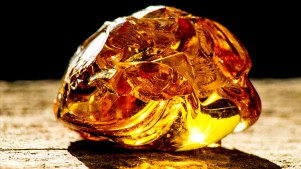
The process of creating perfumes - is an art! Here you can find the continuation of the article about the most commonly used, popular and interesting notes in perfumery.
Sandalwood
The list of perfume, which is containing sandalwood oil is too long. This universal note is appreciated by many fans of perfumery. For the essential oil with a warm and soft smell, the roots of «Santalum album» distilled with steam.
Moss
Oak and moss wood notes are necessary components to create compositions with chypre, herbs and greens notes. Extraction method is used for the absolute oil of oak and wood moss.
Citrus
Most fruit in perfumery cannot be applied due to the fact that they include a large percentage of water. Therefore citrus is widely used in perfumery. For essential oils firstly fruits dried, and then extracted from the rind of the necessary elements. Almost we can say that this note is in all colognes and refreshing waters. It should be noted that in addition to being a very pleasant citrus smell, this note is also good for health.
Musk
This is derived from the gland of animal which is named "Musk deer". Musk deer special species of deer family is an animal that lives on the high Asian plateau. Musk deer hunting is prohibited, and musk export is strictly regulated in the world. Currently, musk extracted without killing or injuring the animal. Natural musk is a substance with a strong odor of ammonia and suffocating. Only after full maturity in an alcohol tincture of musk smell gets unusual animal sensual note of that and the note is appreciated in perfumery. Now perfumers often replace the natural musk to more affordable and cheap synthetic analogues.
Ambergris
Fragrant product that is formed during digestion in the stomach of whales and they burped. Ambergris is found naturally in sea water floating or stranded. After the ban on hunting whales perfumers get ambergris from fishermen who find it sometimes in their own nets. You probably already understand the fact that this is a very rare and expensive ingredient. That is why the ambergris is used only in expensive perfumes.
Synthetics
With the development of science, synthetic scents took their irreplaceable place in the composition of perfumes. It is impossible to imagine the existence of modern perfumery without synthetic components. You`d be surprised, but without synthetics would not have created any of Chanel number 5 or Eau Sauvage, nor Opium! Up to 30-ies of the XIX century, perfumes made only from the blessings of nature, which was very hard work. Therefore production was extremely expensive, and the perfume was considered something of a luxury, and intended only for the privileged and wealthy members of society. Everything changed after 1830, the year the French chemists began experimenting with natural fragrances and applied the method of synthesis. Chemists have used synthesis and created analogs of natural scents based on the individual components derived from essential oils. Successes have pushed scientists to obtain aromatic compounds based on fossil raw materials, oil or coal. And as a result of this successful experiment today so far hundreds of new scents synthesized that are mixed with conventional natural flavors to create a unique inimitable composition.



